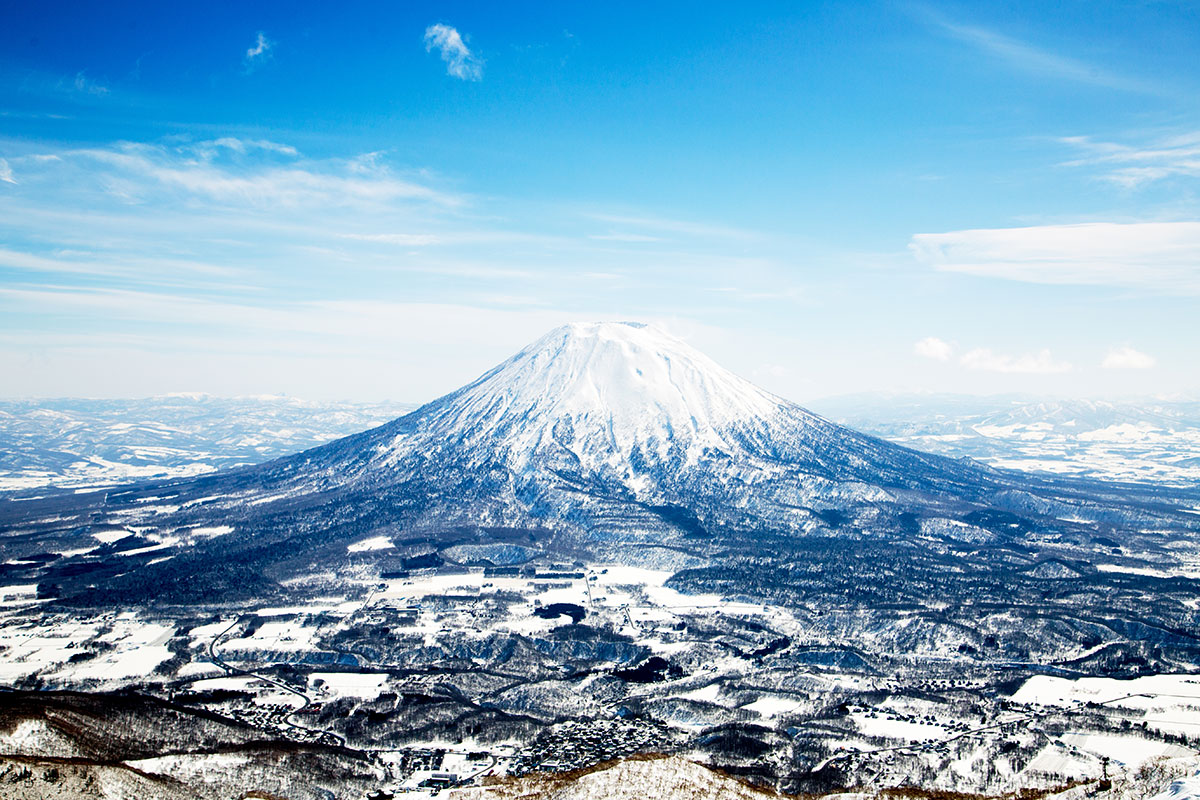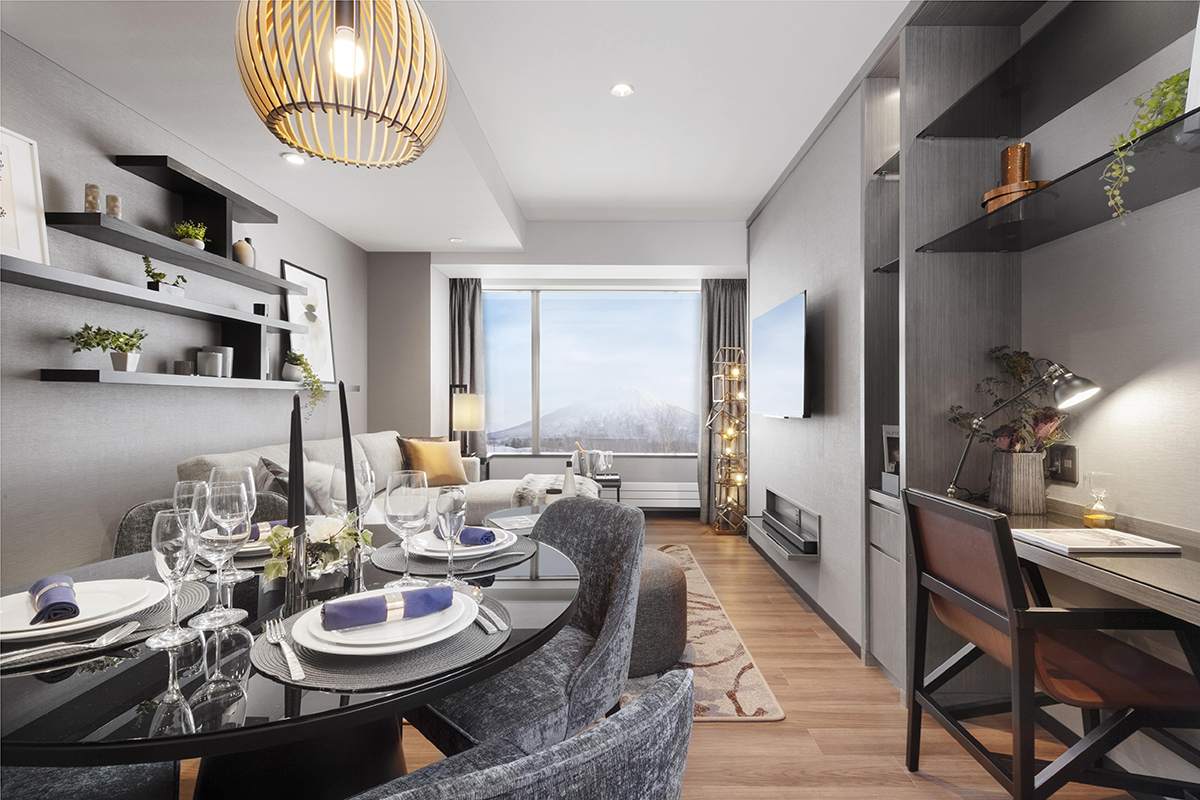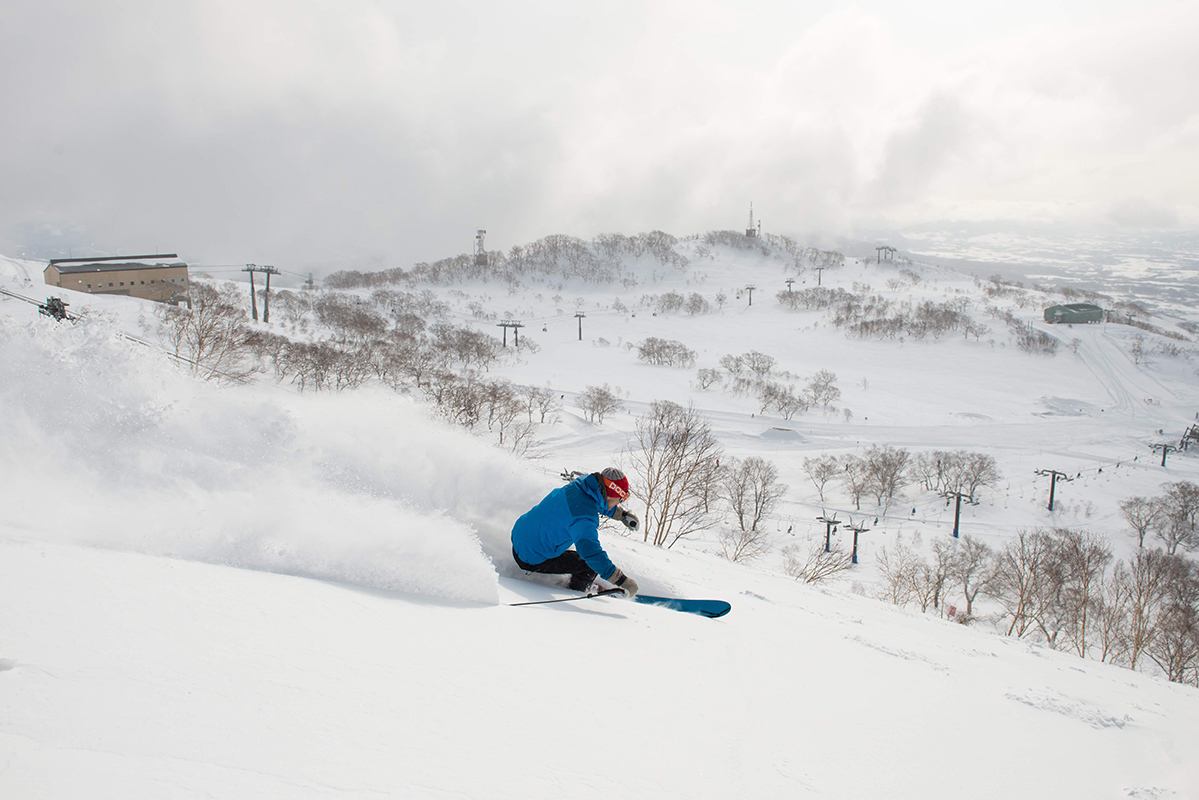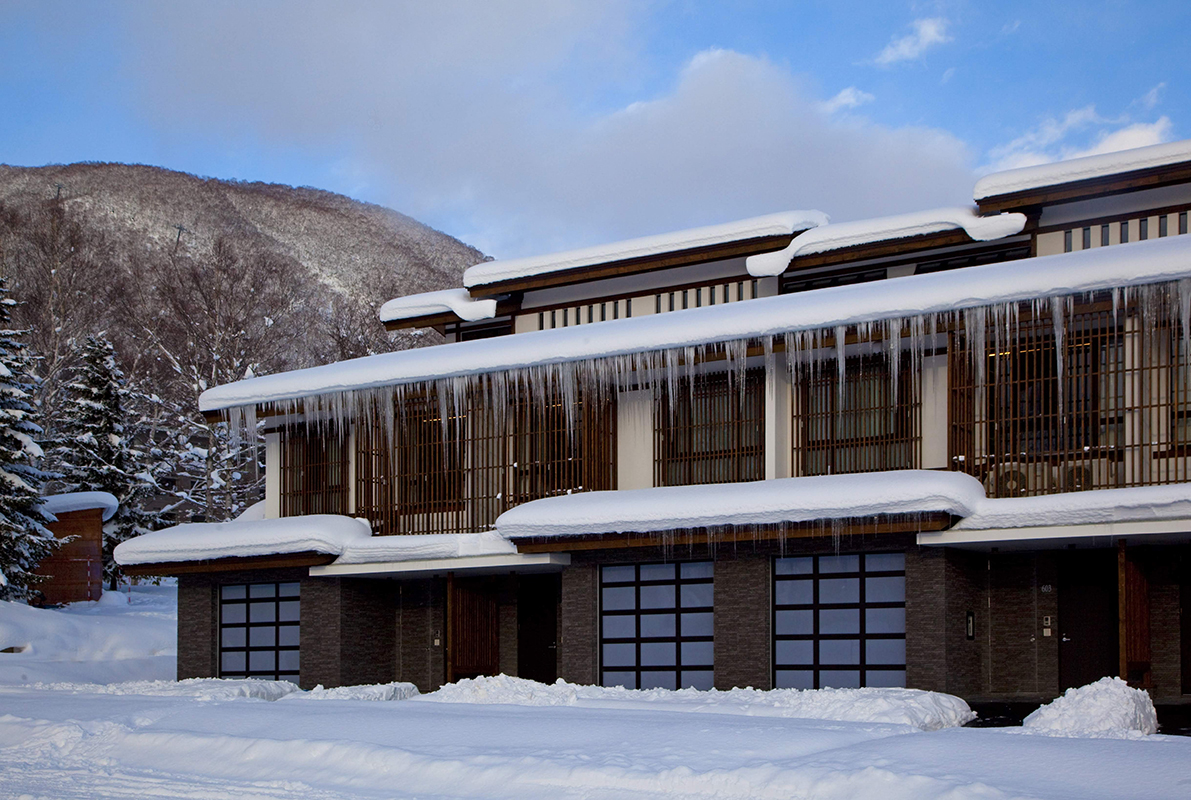This website uses cookies so that we can provide you with the best user experience possible. Cookie information is stored in your browser and performs functions such as recognising you when you return to our website and helping our team to understand which sections of the website you find most interesting and useful.
Discover why serious skiers – and investors – are making a downhill run to Niseko Village, Japan
By Rachel Ingram | 2 September 2019 | Travel
The Japanese skiing resort is gaining popularity as the place where piste meets east

With the Rugby World Cup heading to Japan in October, followed by the Summer Olympics in 2020 and Expo 2025, the world’s eyes are on the East Asian island nation. But while many still think of Japan for its traditional sports like sumo wrestling, it’s actually a winter sports hotspot too.
The burgeoning ski hub of Niseko on the island of Hokkaido has been a secret closely guarded by Japanese and Australian fans since it opened in 1982 – but the resort’s potential as a world ski destination is now properly taking off. As the effects of global warming shorten the European ski season, locals are willing to chase the white stuff further afield. And the resort’s infrastructure is keeping pace with this demand, with myriad new hotel offerings and apartment investment opportunities opening year on year.
But why, as Europeans with the Alps on our doorstep, would we travel for the best part of a day to hit the snow in Niseko? The answer: powder. For around six weeks every year, Niseko is delivered a fresh dump of snowfall several inches thick every day. This can mean that blue sunny panoramas are few and far between, but what you lack in goggle marks you make up for in snow quality. The resort is a veritable powder playground, with the finest, fluffiest snow on the planet, making it super easy skiing – and great fun.
When I hit the slopes earlier this year our guide sighed apologetically: “We haven’t had snow in five days” – prompting more than one confused glance around the pristine pistes. As a European accustomed to relatively icy runs, I simply couldn’t fathom what he was talking about. It was the best snow I’d come across in years – several inches of power, without a patch of ice to slip on for miles.
At the end of the first day I would begin to understand, though, as we were blessed with a covering of fluffy white flakes, coating the mountain in a fresh half-foot of snow. “When you’ve done a season here, you become a powder snob,” our guide said with a laugh as he recalled memories of all the tricks he’s notched up in the perfect conditions – skiing up the side of tree and leaping into the foot-high powder without worry of injury, racing from the top of the mountain to bottom at 160km/h – it’s safe to say I was more comfortable with the scenic route down.
So what exactly makes the snow so good? It’s all about the snowflakes. The flakes (scientific name ‘stellar dendrites’) are special to this part of the world. Their large ferris wheel-like silhouette makes the snow really light and dry, resulting in that signature powder. “It’s hard to explain how light it is,” our guide said. “It’s like snow falling on the screen on your car, you can just brush it off.” By removing the icy element, I found it was easy to rediscover my ski legs and by day two I was speeding down the slopes with confidence.
With wide, gentle and relatively empty slopes, Niseko is ideal for beginner and intermediate skiers and snowboarders. While the resort isn’t as expansive as its European counterparts (though by no means small with more than 50km of slopes), a variety of terrain accommodates all skiing styles – gentle slopes to speed down, off-piste powder perfect for carving through, silver birch forests just begging to be slalomed through, and freshly carved snow parks purpose-built for perfecting a whole host of tricks – has plenty to keep all levels entertained for a few days. It’s also worth mentioning there are three resorts included on your lift pass, all interlinked by ski lifts, with a free bus at the bottom traversing between the various resorts. >>
Related: Rediscover the adrenaline rush of real skiing with Colorado’s greatest runs

The views are pretty special too. Ranging between 255m and 1,188m, the slopes are set against the soaring backdrop of Mount Yotei, which, at nearly 2,000m, rises over Hokkaido like Fuji over mainland Japan. And when the sun emerges, the diamond-like snow glistens beautifully.
Niseko – a three-hour transfer from the island’s international hub, New Chitose Airport – could be described as a more relaxed, and less pretentious, version of Courchevel. Snow conditions are consistently good, slopes are always smooth and there’s plenty of après ski.
A bonus of being in Japan is that, unlike Europe with its long, jostling lift queues, you get East-Asian politeness – orderly lines lead to the chairlifts where staff warmly guide visitors to their seats. While the lifts are a little outdated, they’re all in the process of being replaced with high-tech alternatives, hopefully in time for the 2020 ski season.
The Japanese service extends to mid-ski hospitality, too. While you can tuck into a pizza and chips if you wish, you could also revitalise your muscles with a steaming hot bowl of noodle soup or katsu curry, washed down with a bottle of Asahi. High up, ski in to The Lookout Café, or ski down to Goshiko at Green Leaf and gaze out over the slopes as you slurp on your soup.
After a day on the slopes, Niseko Village offers a number of casual and smart-casual dining options – head to The Crab Shack to try one of the biggest crabs you’ve ever seen (the coastal location means that fresh seafood is a favourite – this makes a healthy change from the mountains of cheese and bread I’m used to filling up on when I visit the slopes in Europe). Meanwhile, the nearby village of Hirafu offers a lively mix of options, from traditional Japanese restaurants and international dining outlets, to sports bars and trendy speakeasies like Bar Gyu – accessed via a fridge door.
Visitors to have a number of hotel options, including The Green Leaf Niseko Village, Hilton Niseko Village, and Kasara Niseko Village Townhouse. From 1 December, visitors can book into the new Hinode Hills Niseko Village, the latest luxury development to join the YTL Hotels group, featuring 79 luxury rooms and suites.
Related: Discover a new way to travel while expanding your property portfolio

We stayed in one of the eight Kasara Niseko Village Townhouses (far right). Located at the base of Mount Niseko Annupuri, the three-bed townhouse combines authentic Japanese charm with contemporary, nature- inspired design – windows open up directly on to the slopes andthebathinthemasterroomiswooden.Theconceptis inspired by the Japanese saying “ichi-go ichi-e”, meaning “once-in-a-lifetime”, and the team does everything it can to make your stay memorable, including in-house dining.
The townhouses are a stone’s throw from The Green Leaf Niseko Village, and guests can use the facilities of the hotel, including the onsens (natural hot springs), which we visited every evening. The pool’s 40C water – which features more than 20 different minerals – is ideal for soothing ski-sore muscles, and sitting with the snow falling on your cold face as your body warms up is incredibly relaxing. After a couple of visits, you get used to being nude, too – clothes and swimsuits are not allowed in the onsen in order to avoid polluting the mineral-rich water.
The hotel also has a restaurant, a bar where happy-hour cocktails are served, and an in-house ski-hire shop, which means no need for the usual trek to the nearest overcrowded ski shop to get kitted out on your first day. All your equipment can also be stored in lockers in the shop at the bottom of the slope.
As word spreads about Niseko’s powder, its real estate market has fast becoming a hotly tipped investment opportunity. Property developers and hotel groups are snapping up land like hot cakes – international players like Park Hyatt, Ritz-Carlton Reserve, W Hotels and Edition have all made commitments to the area – and for owners, returns are already at around 3%, we’re told. This figure is only bound to go up as the development grows and the resort expands its multi-season offerings – in the warmer months, when the lakes melt and vegetation blooms, Niseko is a favourable destination for hikers and water sports enthusiasts.
Whether Niseko Village will become Asia’s Aspen remains to be seen, but if you’re looking to invest in a ski resort without the price tags of the European resorts, now is the time to take the leap.
Read more in Tempus Magazine's Design Edition, available now








